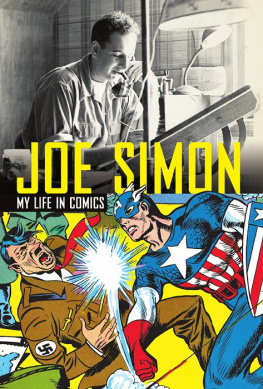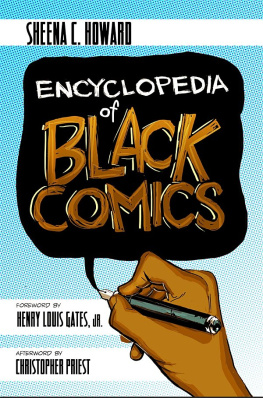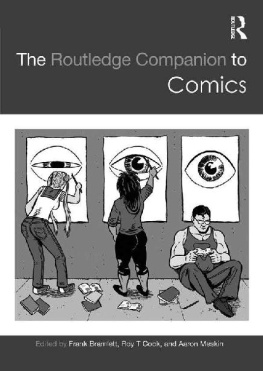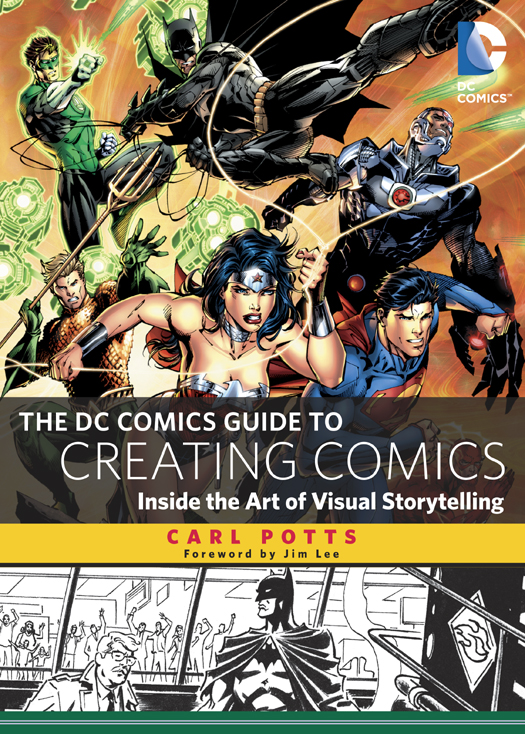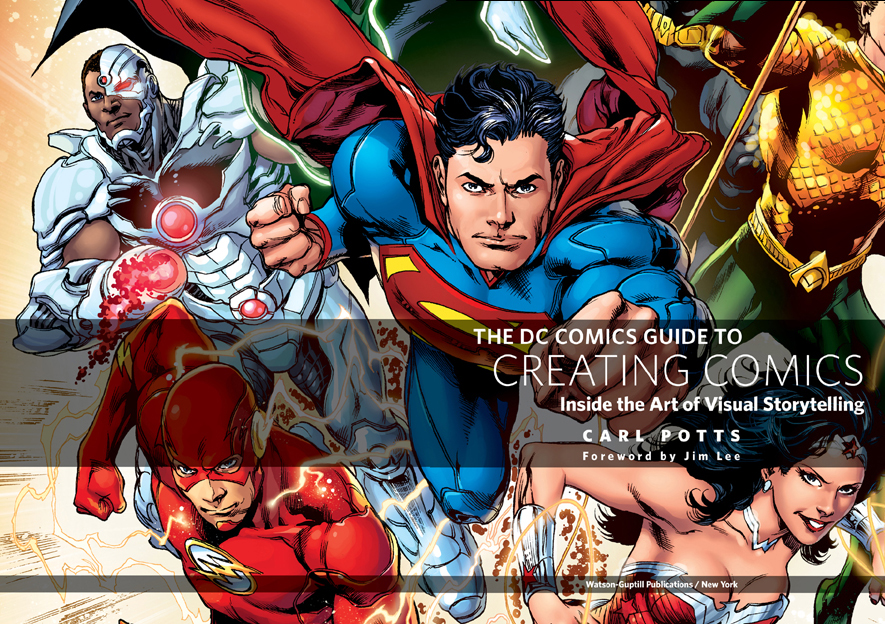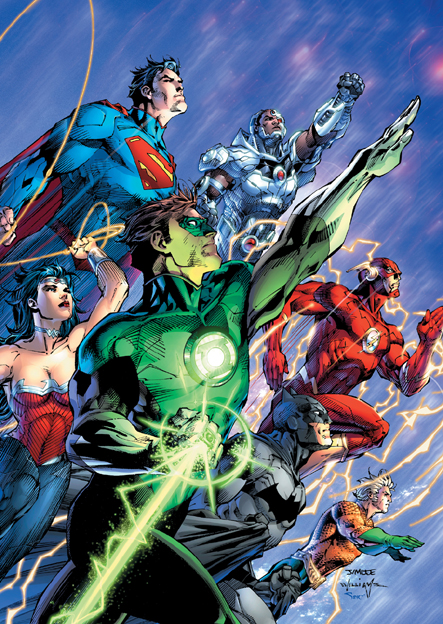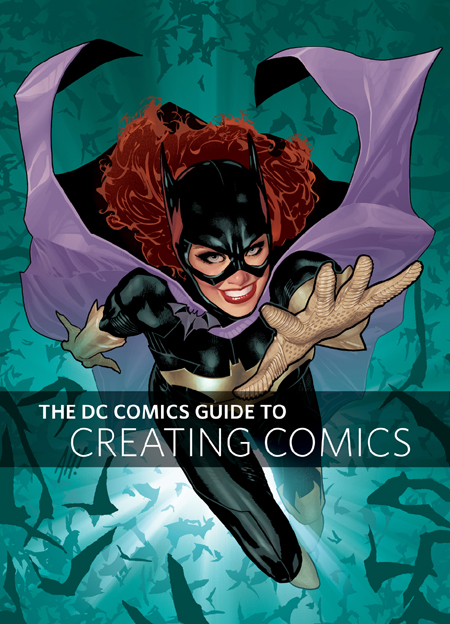
Copyright 2013 DC Comics.

All related characters and elements are trademarks of and DC Comics.
WB SHIELD: & Warner Bros. Entertainment Inc.
(s13)
WATS30191
All rights reserved.
Published in the United States by Watson-Guptill Publications, an imprint of the Crown Publishing Group, a division of Random House, Inc., New York.
www.crownpublishing.com
www.watsonguptill.com
WATSON-GUPTILL and the WG and Horse designs are registered trademarks of Random House, Inc.
Selected artwork in this title appeared in previous DC Comics publications.
Library of Congress Cataloging-in-Publication Data
Potts, Carl.
The DC Comics guide to creating comics : inside the art of visual storytelling / Carl Potts ; foreword by Jim Lee. First [edition].
Includes index.
1. Comic books, strips, etc.Authorship. 2. Comic books, strips, etc.Technique. I. Title.
PN6710.P68 2013
741.51dc23
2012050026
ISBN 978-0-385-34472-2
eISBN: 978-0-385-34473-9
Text design by Ken Crossland
Cover design by Ken Crossland
Cover art by Jim Lee (top images, front and back) and Bill Reinhold (bottom)
Half-title page: Art by Adam Hughes
Title page: Art by Ivan Reis
: Composed using art assets from DC Comics Style Guides
v3.1
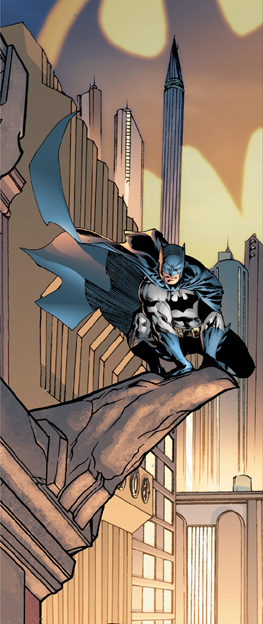
To those who love comic books/graphic novels and wish to create them or to better appreciate why comics are such a powerful storytelling medium.
Thanks
A number of people extended themselves to help make this book a reality. I would like to thank Jim Lee, Patrick Barb, Candace Raney, Josh Anderson, Whilce Portacio, Bill Reinhold, Will Rosado, Phil Jimenez, Denny ONeil, and Marie Javins! Thanks also to Marco DiLeonardo, Michael Wooten, Fred Ruiz, Shelley Eiber, Jeanette Winley, Wanda Phillips, and Steve Korte for their efforts.
CONTENTS
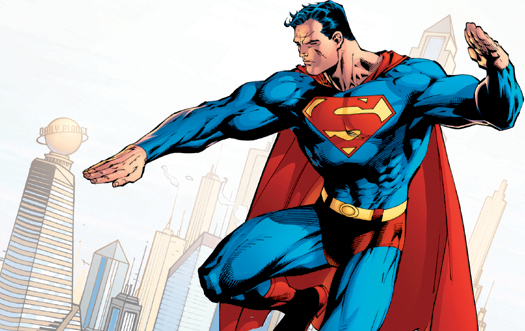
FOREWORD
Nothing gives me greater pleasure than introducing the art of visual storytelling as presented by my mentor and art guru, Carl Potts. For the most part, everything I learned about creating comics can be divided into two periods: the time BCalso known as Before Carl and the time after, which I call conquering the deep, dark void. In years 1 to 22 BC, I struggled to learn the art of visual storytelling. Just because you have a love for reading comics and some innate drawing talent, that does not mean you automatically qualify as a comic book artist. In fact, I think it works against you, because you think you know more than you actually do. You think that you draw better than your least favorite professional artist even if you cant complete an entire page of panel-to-panel continuity by yourself. Ever. That was me.
But somewhere deep inside, I realized I needed to improve. (Because no one was giving me any work, right?) So I learned all I could about comics and visual storytelling through the few books that were available at the local library. However, it wasnt until I met Carl through another Marvel Comics editorthe late, great Archie Goodwinthat I started on my true path toward enlightenment in the deep, dark void. Because thats what art can be when you realize you need to start all over again. You have to drop any artifice or defensive shields (the ones you create to preemptively protect yourself from cruel criticism) and accept the fact that theres a lot more to this artform than meets the eye. You have to learn the basics all over again. For real this time. With feeling. Wax on, wax off.
And thats where Carl served as my guide. My sensei. My Jedi master. And teach me he did: everything from the 22 panels that always work by Wally Wood to how not to cross the line. He gave me telephone bookthick tomes of photocopies from books explaining all the ins and outs of cinematic terminology and visual storytelling. Carl passed along handwritten memos explaining what I did well (not much) and what I did wrong (though constructively polite) as I turned in tryout page after tryout page. Carl laid out several of my biggest projects so that I could work over his thumbnails.
I absorbed all those lessons until I thought I was ready to snatch the stone from his handthe initiation all new artists had to endure and complete to take a place at the vaunted table of professionals. Or maybe it was picking up the burning white-hot urn with your forearms and carrying it to the gates of the dojo. Or maybe he offered me one of two pills in his handsone blue, one red. I dont recall that with great accuracy; the endless training has that effect on your mind. But whatever the process, it worked. I emerged a comics professional, trained for the very first timeonce again.
I joke about the Zen mysticism of the whole process, but in truth, there is much seriousness to it all. I learned a great deal at the hands of my mentor, Carl. The years working with him set the baseline and foundation for much of my work even as I experimented, grew, and broke the very rules I was initially taught. Because the final lesson for all things creative is written thusly: Just because it works for you, that doesnt mean its the only way of doing something. And I think that was Carls ultimate lesson imparted to me and one that is triply clear in this fantastic book you hold in your hands. There are rules and lessons to be learned, but comics are called art for a reason. The subjectivity of it is as clear and true as its objectivity, and that relationship is explored and demonstrated clearly in the chapters ahead.
What took me years to learn can now be yours to enjoy in mere days. May your own journey in the deep, dark void be short and sweet.
Jim Lee
Burbank, California
Art by Jim Lee and Scott Williams.
INTRODUCTION
From a very young age, I devoured all forms of storytelling, especially visual storytelling. I couldnt get enough of films, TV, and comic books.
As an adolescent, Id watch Saturday morning cartoons on TV before heading outside to mow lawns. Most of the money I earned by cutting, raking, and bagging grass clippings quickly found its way into the cash registers of the local stores that carried comics.
The works of comics masters Jack Kirby, Steve Ditko, and Joe Kubert, along with many others, entertained and fascinated me. I read and reread my comics until they began to fray.
My early drawings were often inspired by the comics I consumed, but those sketches consisted mostly of single images.
My initial attempts to string together sequences of panels often resulted in frustration. Connecting panels to tell a story proved much more difficult than generating individual and unconnected drawings.


